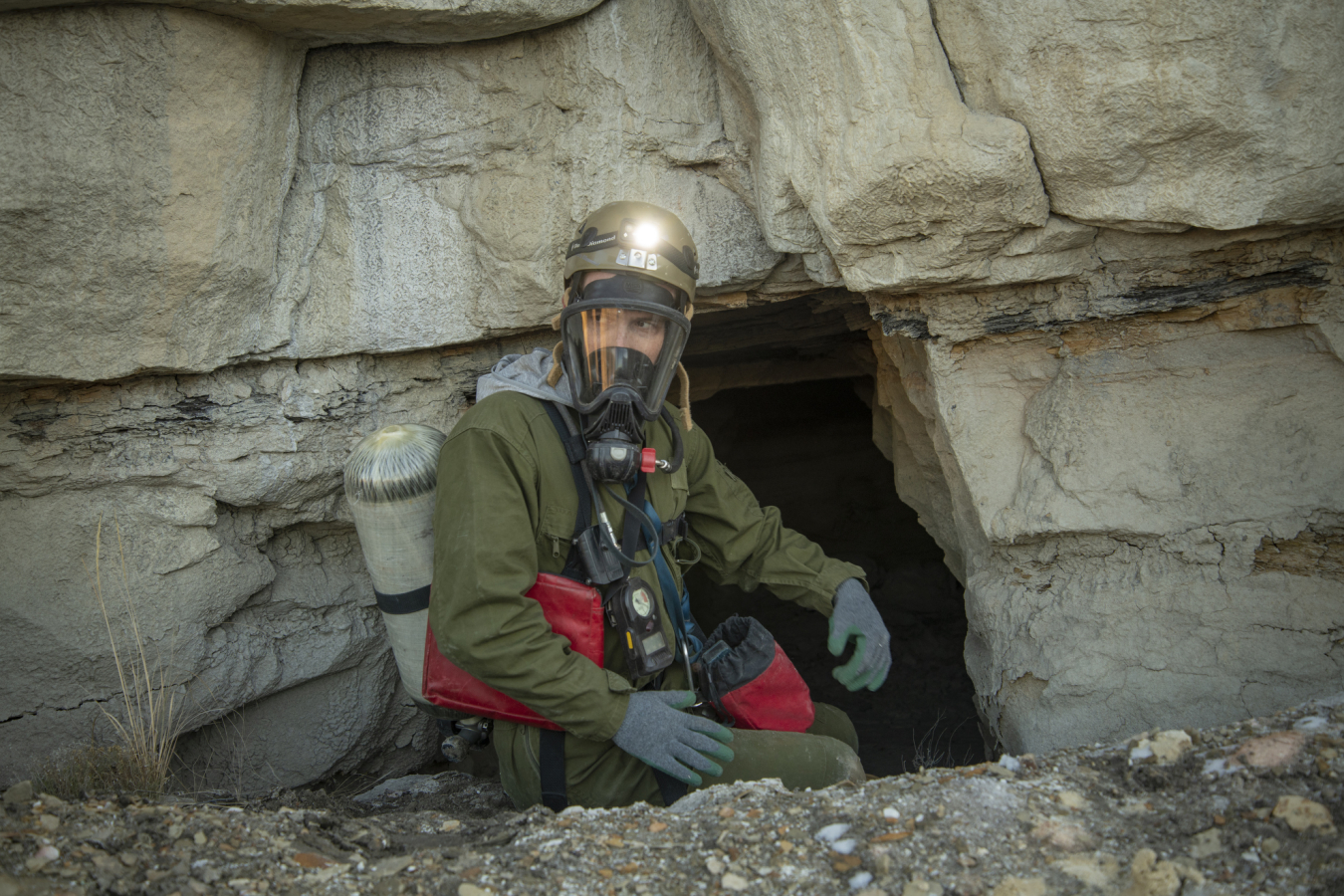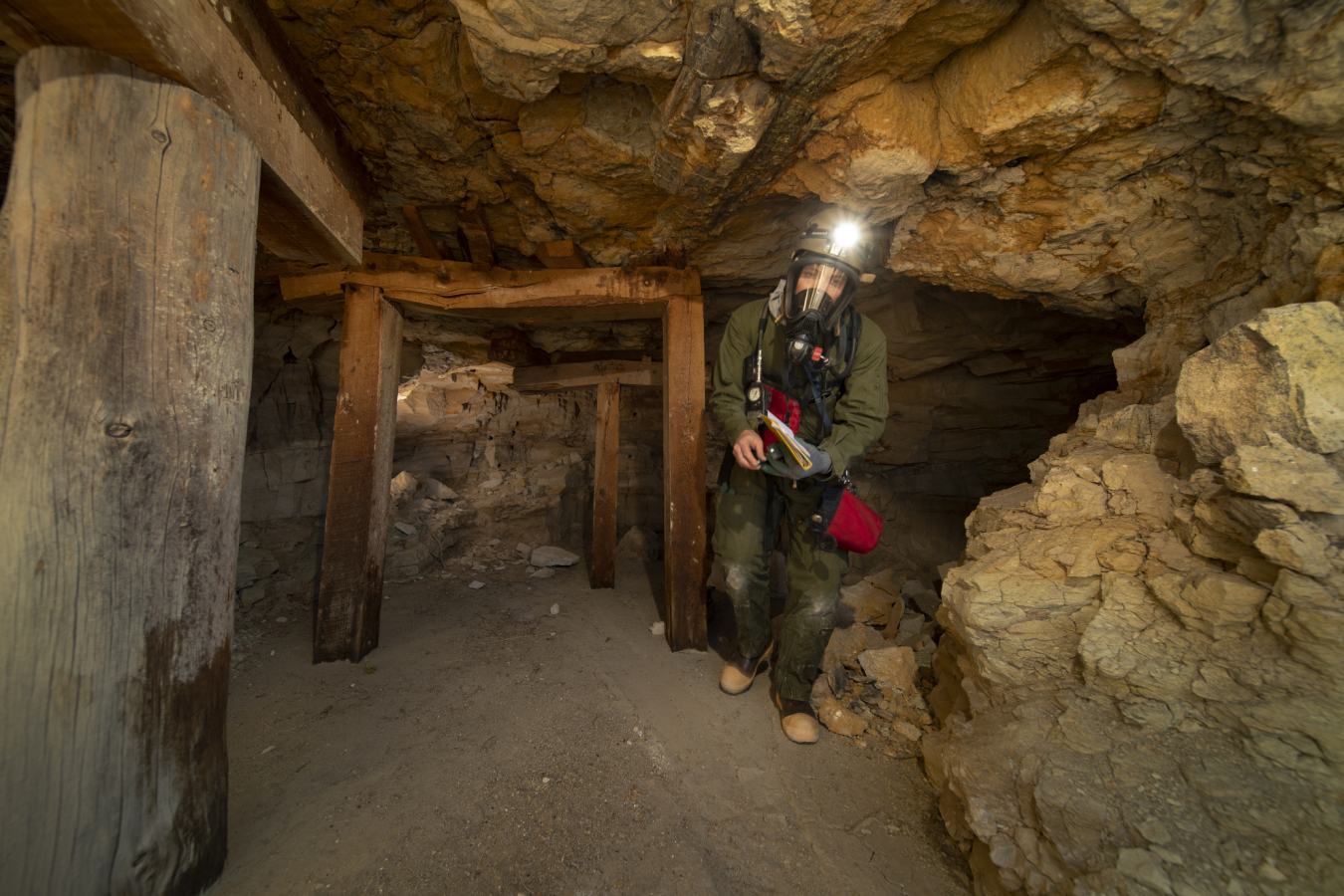Abandoned mines are an important habitat for many bat species.
February 23, 2021
Aaron Sidder of Bat Conservation International prepares to enter a mine portal in New Mexico. (Photo by Bill Hatcher/BCI.)
The U.S. Department of Energy (DOE) Office of Legacy Management (LM) Defense-Related Uranium Mines (DRUM) Program is protecting the environment through a cooperative partnership with Bat Conservation International (BCI).
The DRUM Program partners with organizations, such as BCI, to inventory and screen for risks at the estimated 4,225 abandoned uranium mines that produced uranium ore for the federal government for defense-related activities between 1947 and 1970. BCI is a conservation organization dedicated to ending bat extinctions. Working collaboratively with other organizations, BCI’s goal is to redefine global conservation using cutting-edge tools, technology, and training to create a real impact on bat colonies worldwide.
“The BCI partnership with DOE and other partner agencies is integral to the DRUM goal of protecting human health and environment,” said DRUM Project Manager Mary Young. “BCI has decades of experience and knowledge in bat conservation in relation to abandoned mine lands and is well respected and trusted within that community."
In fall 2020, BCI undertook bat surveys of DRUM sites in Colorado and New Mexico, encompassing 104 mine openings. The surveys identified bat species and documented telltale signs of their presence, such as guano, insect parts, and roost staining. BCI made recommendations on which mines could be sealed off without disturbing bat habitat and flagged 41 openings as candidates for bat- and wildlife-compatible closures.

Aaron Sidder from Bat Conservation International passes cap and post timbers en route to the mine portal. (Photo by Bill Hatcher/BCI.)
BCI team members surveyed exposed mine portals and the interior of the mines that were deemed safe to enter by the highly trained team. A subterranean specialist, suited up with approved personal protective equipment, entered mines to inspect and document bat activity. When faced with potential safety hazards, BCI used light detection and ranging drone technology to map underground mines.
The BCI team determined 14 of the 24 mine features surveyed in New Mexico offered some level of subterranean bat habitat. Four of the features contained evidence of use by bats, in the form of guano and insect parts. None of the features contained live bats at the time of the survey. The BCI team determined bat use of the occupied features primarily represented minor day and night roosting.
BCI’s expertise extends beyond bats. During the surveys, staff documented use of abandoned mine features by other animals, identifying scat and nests. Signs of woodrat and field mouse use were common, and horse and bobcat tracks were also observed. BCI will also perform other required wildlife surveys, such as raptor surveys, to make sure that safeguarding projects do not disturb nesting birds of prey during breeding season. In addition, BCI looks for potential culturally and archaeologically significant items during their surveys.

